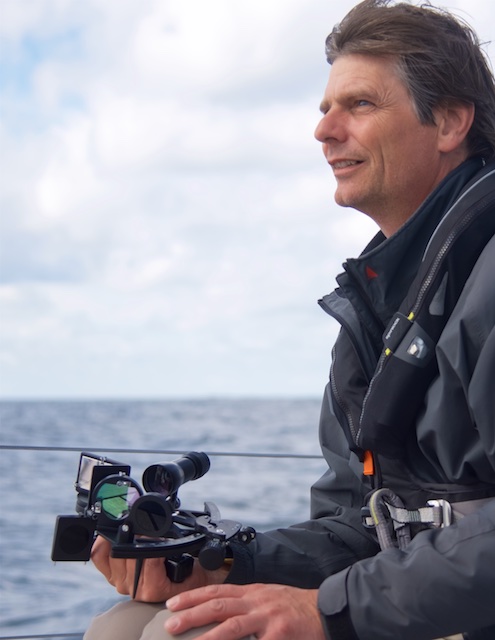Why Reginasailing?

What makes Reginasailing so special for Ocean Sail Training
Individual approach:
As much background information as desired and as little complication as necessaryNo Apps or electronics necessary (except the possible wrist-watch)
No complicated logarithm tables!
The most modern and simple way of teaching classic ocean navigating
Sophisticated unique Reginasailing templates for all your observations
Revert to 30+ tutorial Reginasailing videos to rehearse, repeat or recap
Bonus: Learn to use the Weems/Plath Star Finder
Bonus: Try out a smartphone App that does it all for you!
Bonus: Learn the shortcuts and where you may do some very practical approximations!
In a nutshell why to join: The Reginasailing learning atmosphere
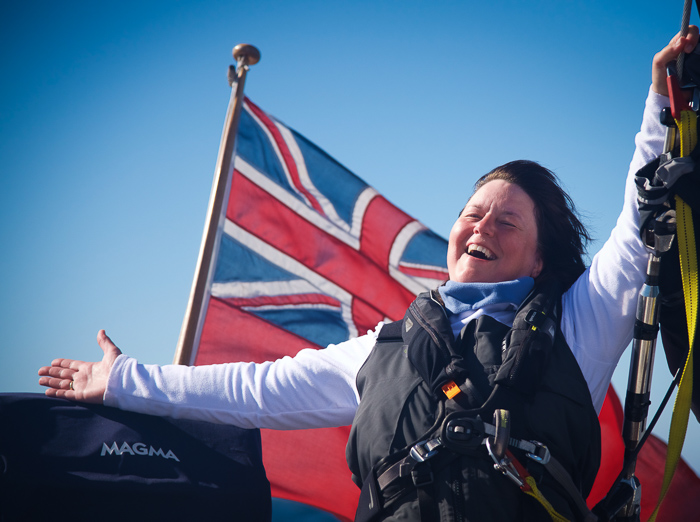
Somewhere on the Bay of Biscay: How you feel when you found your position by means of the sextant!
The Emphasis
For decades, I have been fascinated by celestial navigation. I love the simplicity and genuin compilation of today’s smart tables and the modern art of celestial navigation. The courses are based on the following three pillars:
The theory:
The goal is that everyone understands – in principle – how smart the system is and why one does each and every stepThe work-flow:
No step is forgotten and mistakes are minimised. It’s no more difficult than following a recipe!The atmosphere:
Keeping it simple and having fun
Without those three fundaments, celestial navigation is something you learn in class-room and seldom use again in your daily-life sailing.
Such a shame, since using your sextant is fun, easy and quick!
The RYA and beyond
Celestial navigation can be taught in a variety of manners, from using complex logarithms of trigonometric figures to a simple: “This is what you do – don’t ask my why…!”
With Reginasailing we try to keep it simple while still understanding the full background. The RYA curriculum is being used and therefore you get fully prepared for your RYA Yachtmaster Ocean Exam.
But it doesn’t end there! Reginasailing is going the extra mile and gives more than simply the minimun required by the RYA. The curriculum has been thoroughly refined and developed further in order to give you the best possible learning experience, remembering how celestial navigation works even years after the course!
For decades, I have been pondering over how to pass on and explain celestial navigation so it does not only become easy to understand but also easy to remember. Obviously, you need to focus on the small details, but you should never loose the big picture about what you are about to do! Many navigators get stuck in the details of corrections, not quite understanding why one does one or the other step and what it all shall lead to.
And then comes the really big challenge: How to make sure that it is not just learnt for your exam but made easy to remember and fall back to – long after you last used your sextant!
With Reginasailing, you learn a method and use templates that keep you remembering each and every step, even years from now.
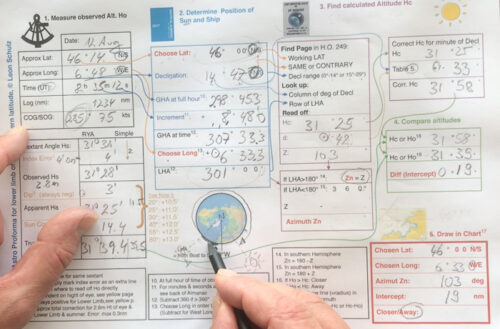
The template for shooting the sun. There are similar templates for noon-sight, planets, stars and the preparation for twilight shots. Logical step-by-step guidance with comprehensive foot-notes.
The Templates
At the end of the course week, participants know the calculations by heart and don’t need to use the templates. Yet, these templates are paramount in the learning process, to be used as your step-by-step recipe. The main purpose of these unique templates is, however, to remember each and every step without having to go back to celestial books before using your sextant the next sailing season. It’s a way to remember how it all worked.
Thanks to the numerous feed-backs from previous participants, these templates are regularly updated. Although, by now, they are actually fairly developed.
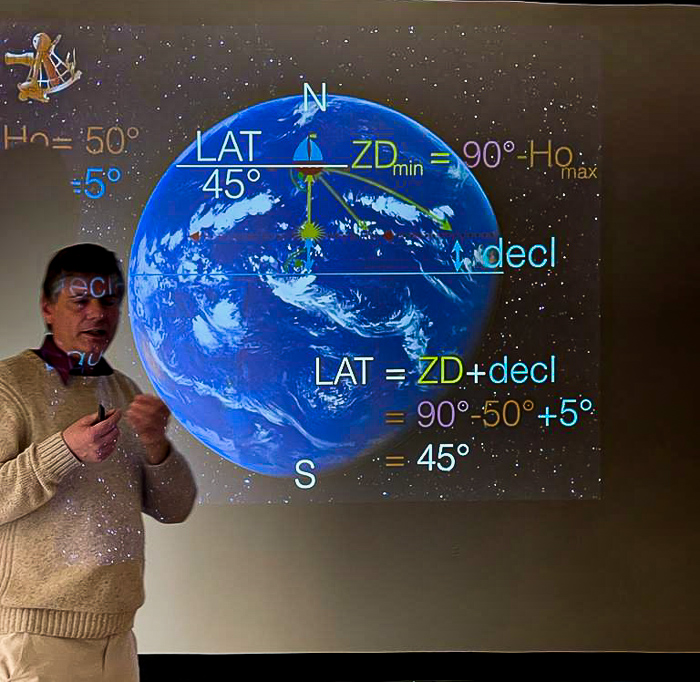
The Slides
Modern presentation technology is used during the theory course. The shown Keynote presentation, for instance, give moving pictures ans show the sun and stars and how they move over the globe and give you a great overview and understanding on how the puzzle falls into place and makes sense.
The slides have been compiled and are annually updated by Reginasailing.
But nothing is as illustrative than the old fashioned flip-board, which is used in parallel if any question from the participants need some more in-depth explanation or a short re-cap from the Day-Skipper or Coastal-Skipper level.
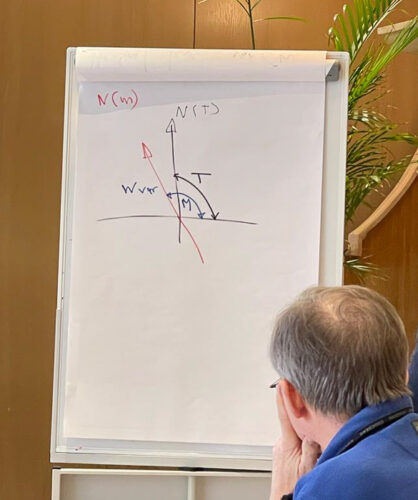
A short recap of how variation works and why you need to add for west and subtract for east (going from True to Compass). This is essential for the compass check but originally dates back to Day Skipper level, which is quickly repeated during the ocean course.
The Videos
Instead of just handing out the shown slides in paper after the course, these slides are alive! Take the entire course again years after you did it or play fast-forward to the desired chapter you need to repeat. The entire theory course also consists of 30 videos contain almost 10 hours of theory explanation plus hands-on tutorial on planning and shooting celestial bodies. The videos are a mix of 16 episodes of theory plus 14 hands-on exercises using the unique Reginasailing templates. As a bonus, the Weems/Plath Starfinder is also being explained as well as where the First Point of Aries is placed in the universe and why.
So, even if you don’t use your sextant for months or years, or might have forgotten some steps mentioned on the templates, you can always go back to the these video tutorials.
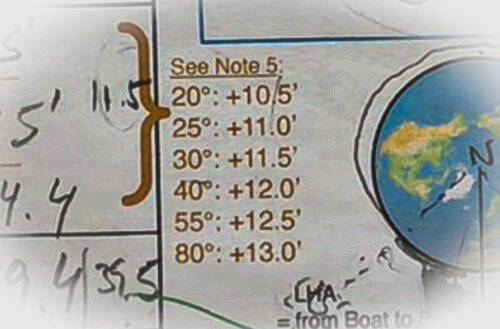
The Shortcuts
During this theory course, the precise way how to do it the most correct way is, obviously, taught: How to follow each and every exact school-book correction, not missing a fraction of a minute that could be calculated more precisely given the figures in the tables and books. This is also being asked by the RYA and therefore taught as the only method by man RYA training centers. “Why simple, when there is a more complicated way?!”
At Reginasailing, we wish to highlight where one may take careful shortcuts and where it is absolutely necessary to use the exact tables.
It’s like you learn in classroom how to predict the Hight of Tide by the decimeter, but then you have wind and air pressure that you cannot control and which influence the entire natural outcome by half a meter or more. Or you learn how to calculate your Course to Steer or Estimated Position by using every single degree for variation and deviation, while your unknown leeway influences the outcome by 5-10 degrees or more in real life.
The risk is that you believe you do some very sophisticated mathematical calculation and get an over-reliance in your calculation. Of course, it doesn’t do any harm in class-room to learn how to do it the most accurate way, but in the end there are aspects you cannot control. It’s like being “Penny-Wise but Pound-Foolish”.
For celestial navigation, your own handling of the sextant on a rocking boat corresponds to wind and air pressure for Hight of Tide and Leeway, respectively. It is very difficult to do any more accurate observation with your sextant from a small rocking boat than some 5′ on the arc, corresponding to 5 nautical minutes of error. If this is how close you get, any calculation mistake of a tenth of a minute looks neglect-able. Of course, any calculating shortcut or rounding adds to the total error. Or like Tom Cunliffe put it once: “Why not take all available accuracy into account? You have loads of time on the ocean to do your calculation, anyway. What else would you do during a long day at sea?”
But what if you are seasick or just don’t fancy risking any calculation errors due to tiredness? Most times you get your position wrong is not due to a huge error on the sextant, but mainly due to a stupid mistake when doing the many additions and subtractions while trying to cater for every available correction in the most accurate way. A tired brain at the navigation table does do mistakes, and these need to be minimised! The truth out there on a rocking ocean is very often a completely different than the situation in classroom. Most sailors are therefore reluctant and don’t bother taking out their sextants not wanting to get involved in too many tiresome manual calculations. What a shame!
If you understand the matter, you may take some practical shortcuts. Therefore, during the Reginasailing course, shortcuts, eye-ball interpolations and approximations are taught, to give a good enough position fix when heavy weather, seasickness or other disturbances ask for a “good-enough” fix. When your sextant reading is no better than some 5 minutes accurate anyway, who cares about a maximum accuracy somewhere on the big ocean?
So at the Reginasailing shore-based course you learn both: The official way with maximum accuracy with all bells and whistle calculations is being taught as the default way. At the same time, it’s being explained where you may do some rounding and approximations and the templates even give some approximate advice which are not more off than 0.3 nm.
It goes without saying that for your Yachtmaster Ocean exam you need to present your sun-run-sun sight reduction calculations in the official way with maximum precision.
The general rule is: If you have the possibility, be as accurate as you can. If you don’t feel like it, getting a fix a couple of miles off is better than no fix at all!
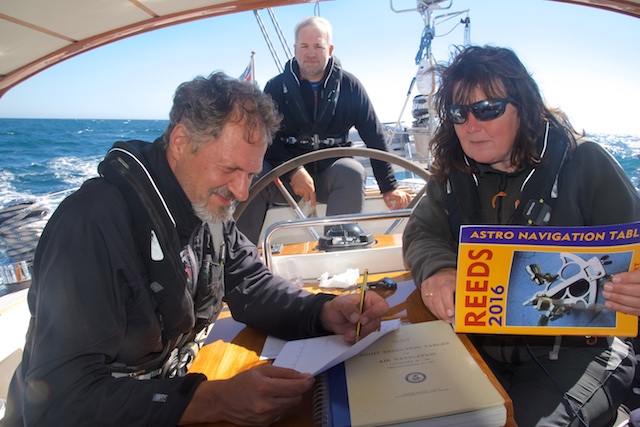
Doing the calculations onboard a rocking boat on the ocean is not always comfortable.
The Almanacs and Tables
Please find below a collection of links to almanacs and tables taken from the Internet. These are third-party products but since they are readily available for download, they can become very helpful to get you going without having to buy any books or tables.
For instance, you need a Nautical Almanac, the three Sight Reduction Tables and some other tables, that I am referring back to in my explanations in the 30 videos or for your own daily navigation. The Almanacs are provided by courtesy of The Nautical Almanac and the Sight Reduction Tables are a courtesy of the Nautical Geospatial-Intelligence Agency.
The Almanac changes ever year, but the sight reduction tables you buy only once.
I would definitely go and buy the corresponding books, since taking them from a laptop or tablet doesn’t make much sense and printing out hundreds of pages of tables isn’t really feasible. But the links may help for studying celestial navigation, having access to the tables from home while your books are onboard or simply as a backup.
I recommend buying all your books from Bookharbour, since here you get a 10% discount when using the code:
rs-BHAPGG10
When you join on an RYA Yachtmaster Ocean course, fictive tables from a non-specified year will be part of your RYA Yachtmaster Ocean package. The below tables and almanacs, however, are for real day-to-day navigation with the sextant and free for you to use.
- Nautical Almanac for 2020 (or buy it from Bookharbour *)
- Altitude Correction Table for sun, planets and stars (normally included in the Almanac when you buy it).
- Altitude Correction Tables for the Moon (normally included in the Almanac when you buy it).
- Time-to-Arc conversion (also found in the Nautical Almanac)
- Increments & Corrections Table (normally included in the Almanac when you buy it).
- Planets’ meridian passage for 2020 (normally included in the Almanac when you buy it).
- Pub. 249 Vol 1-2020-Dec Sight Reduction for Stars f(or buy it from Bookharbour *)
- Pub. 249 Vol 2 Sight Reduction Tables for Latitudes 0-40° (or buy it from Bookharbour *)
- Pub. 249 Vol 3 Sight Reduction Tables for Latitudes 39-89° (or buy it from Bookharbour *)
- Table 5 (also found in the Sight Reduction Tables when you buy them)
- Plotting sheet for the Northern Hemsiphere (or buy it from Bookharbour *).
* Don’t forget your discount code: rs-BHAPGG10
My templates will be given to participants on the course which you are then free to use for your own personal navigational purpose.
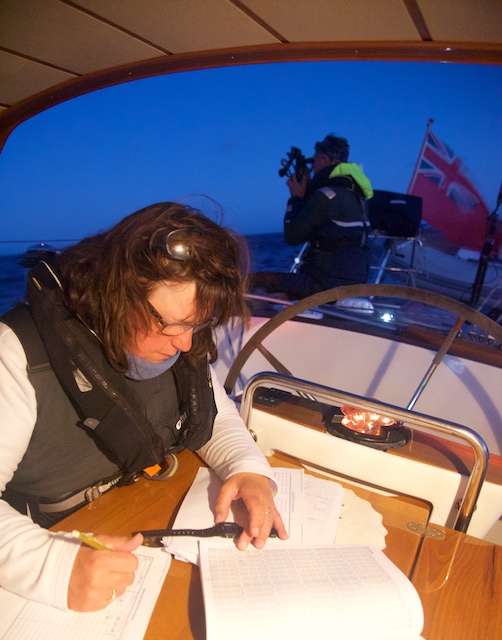
Book your Place
With Reginasailing, you will learn from an experience ocean sailor who really uses a sextant. It’s less theoretical and very much practical. And very personal.
Please contact me if you wish to take part on an Ocean Training Course.
